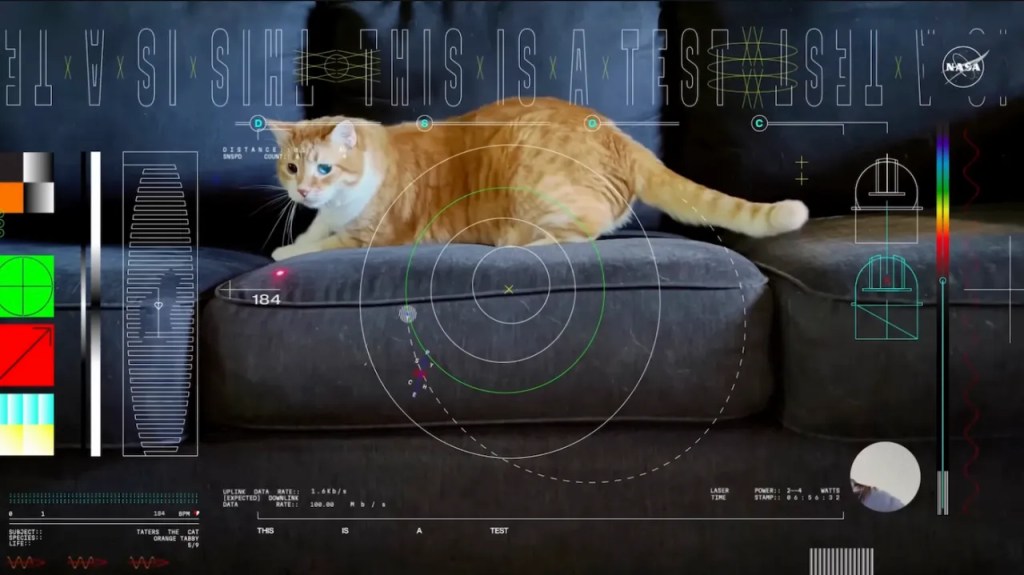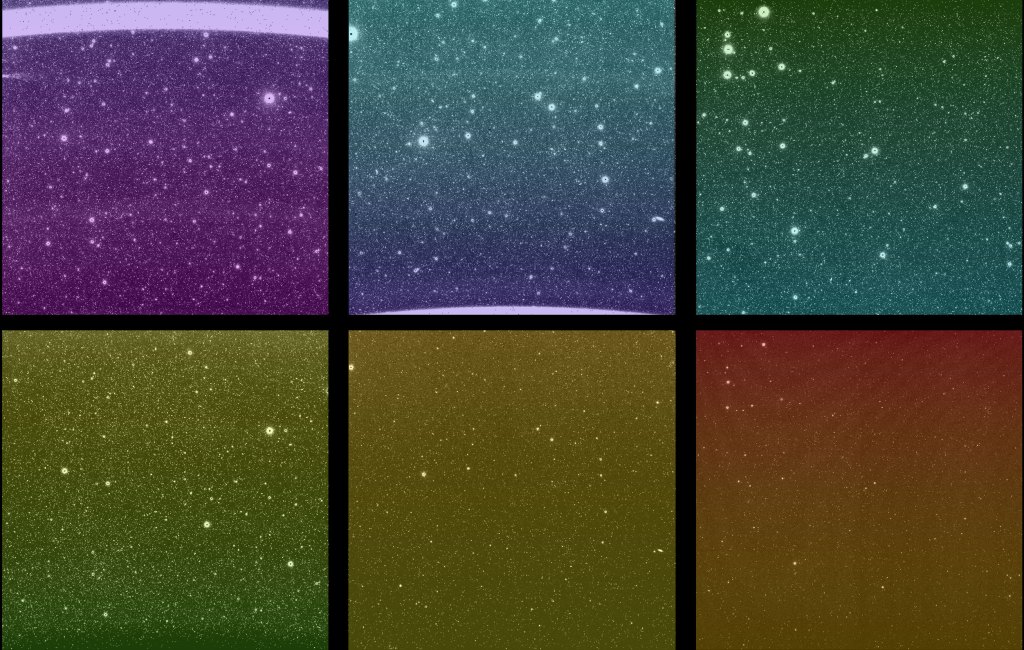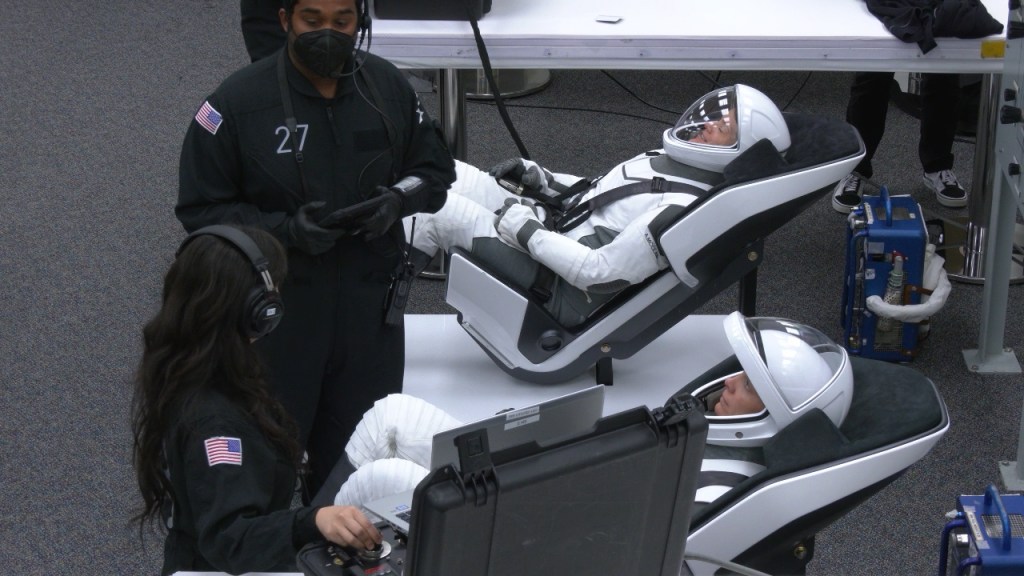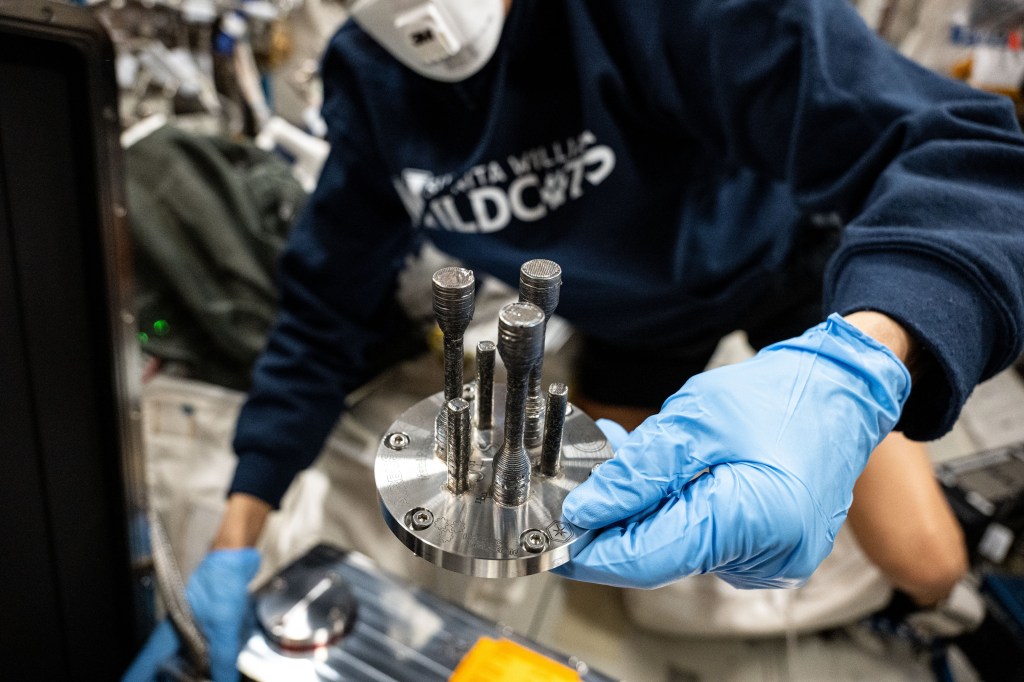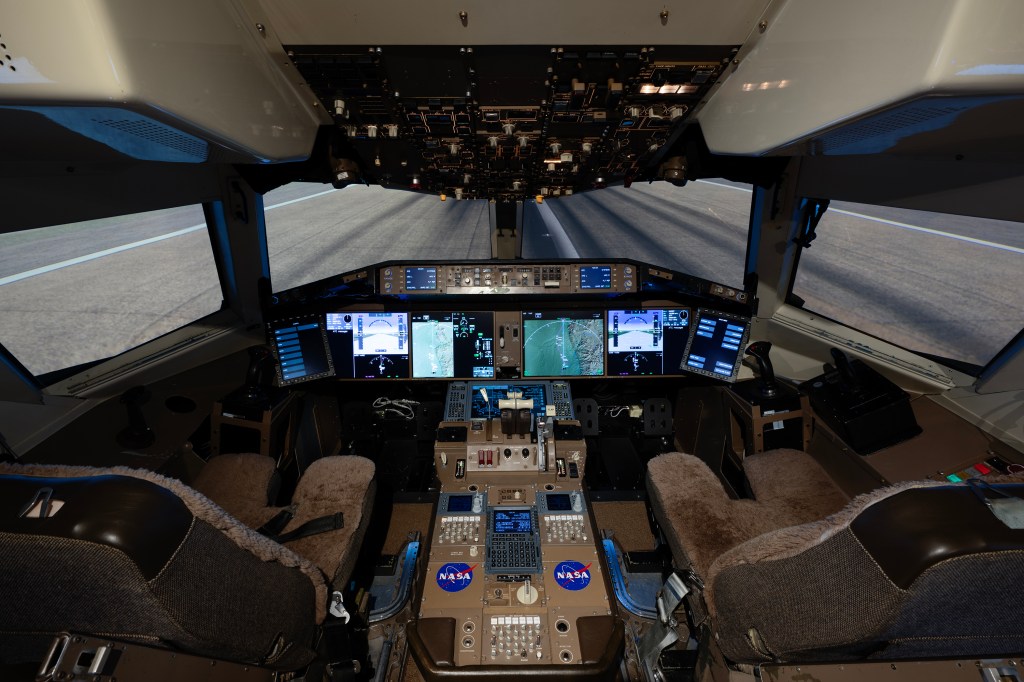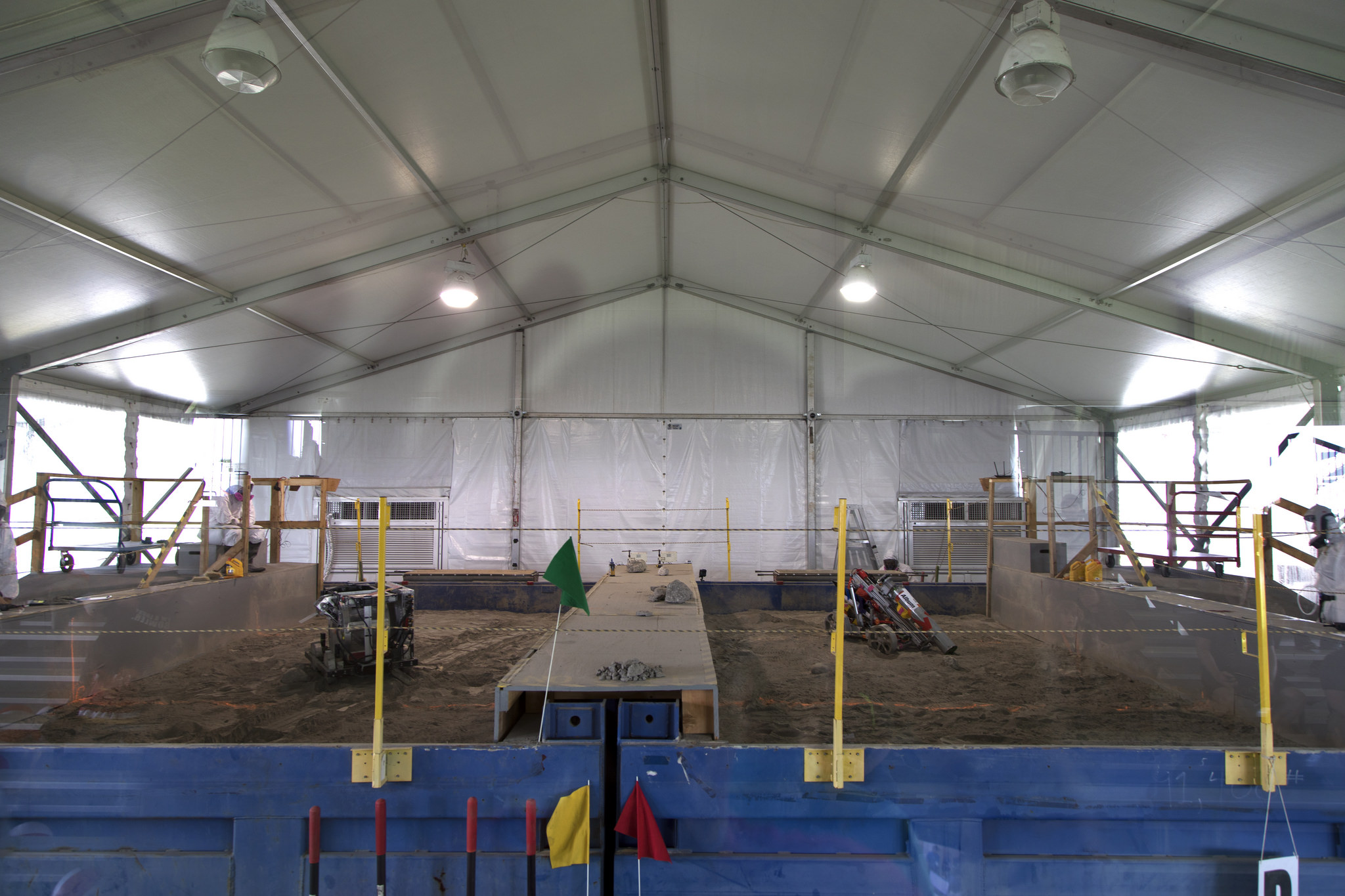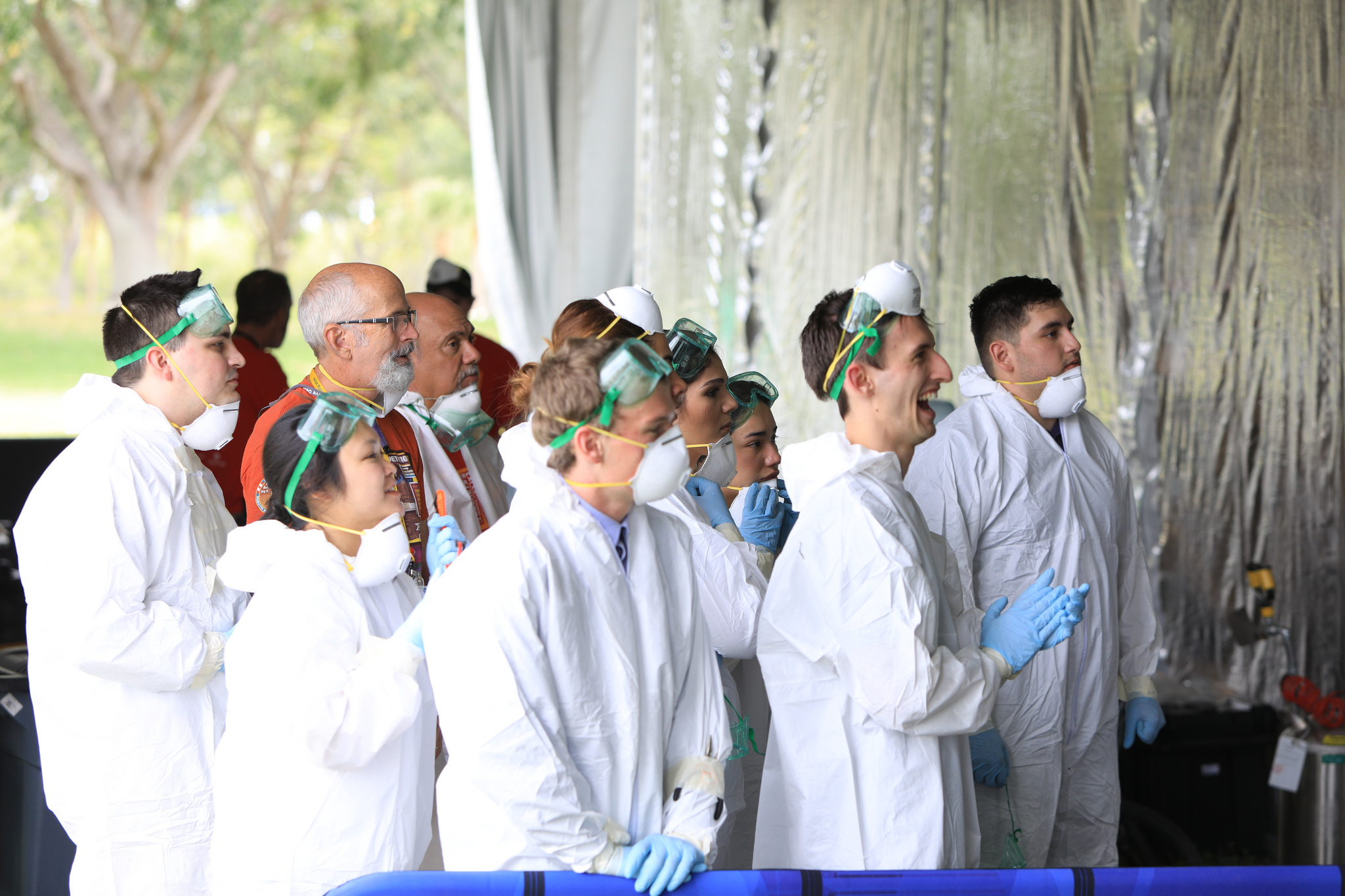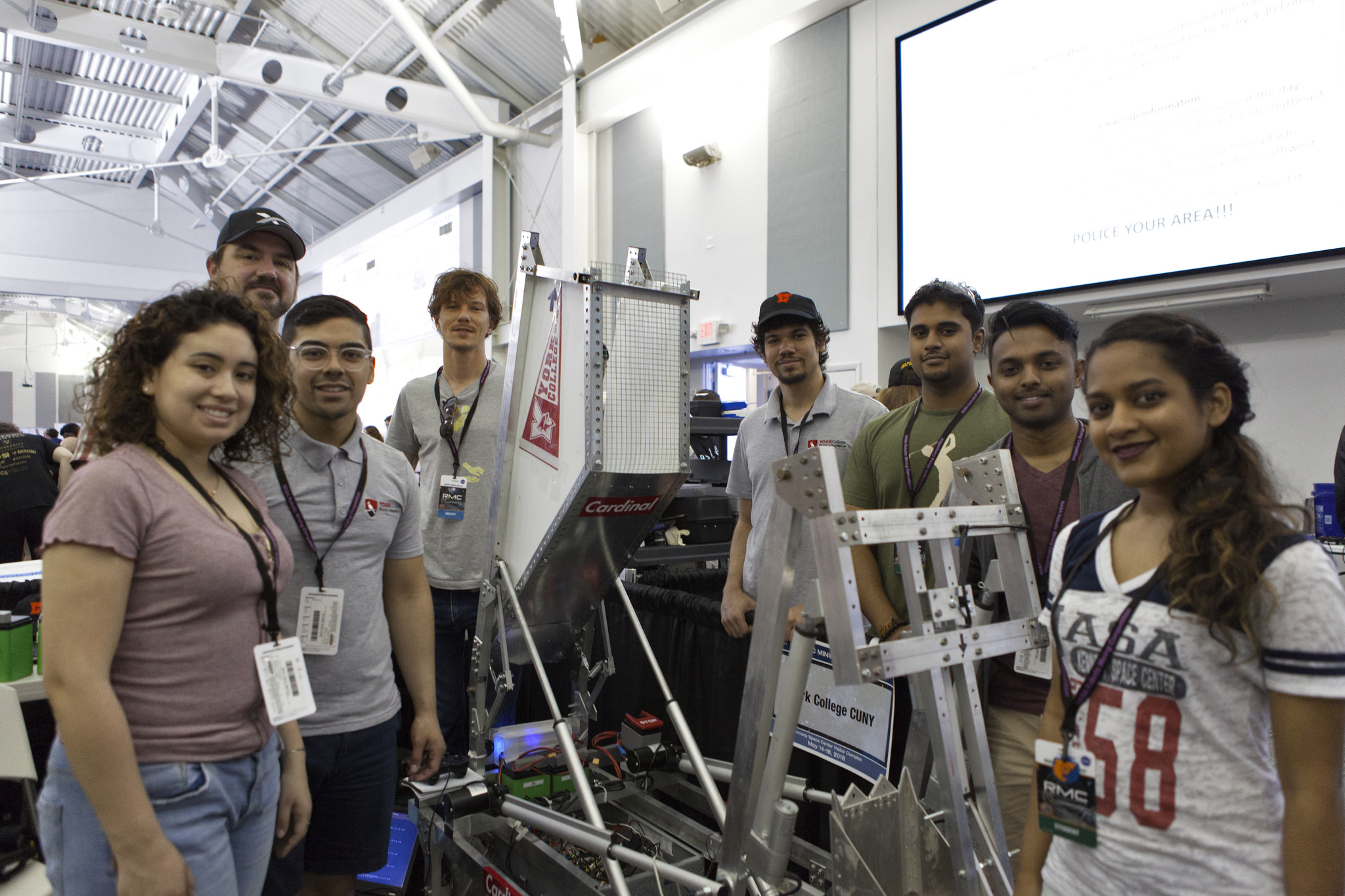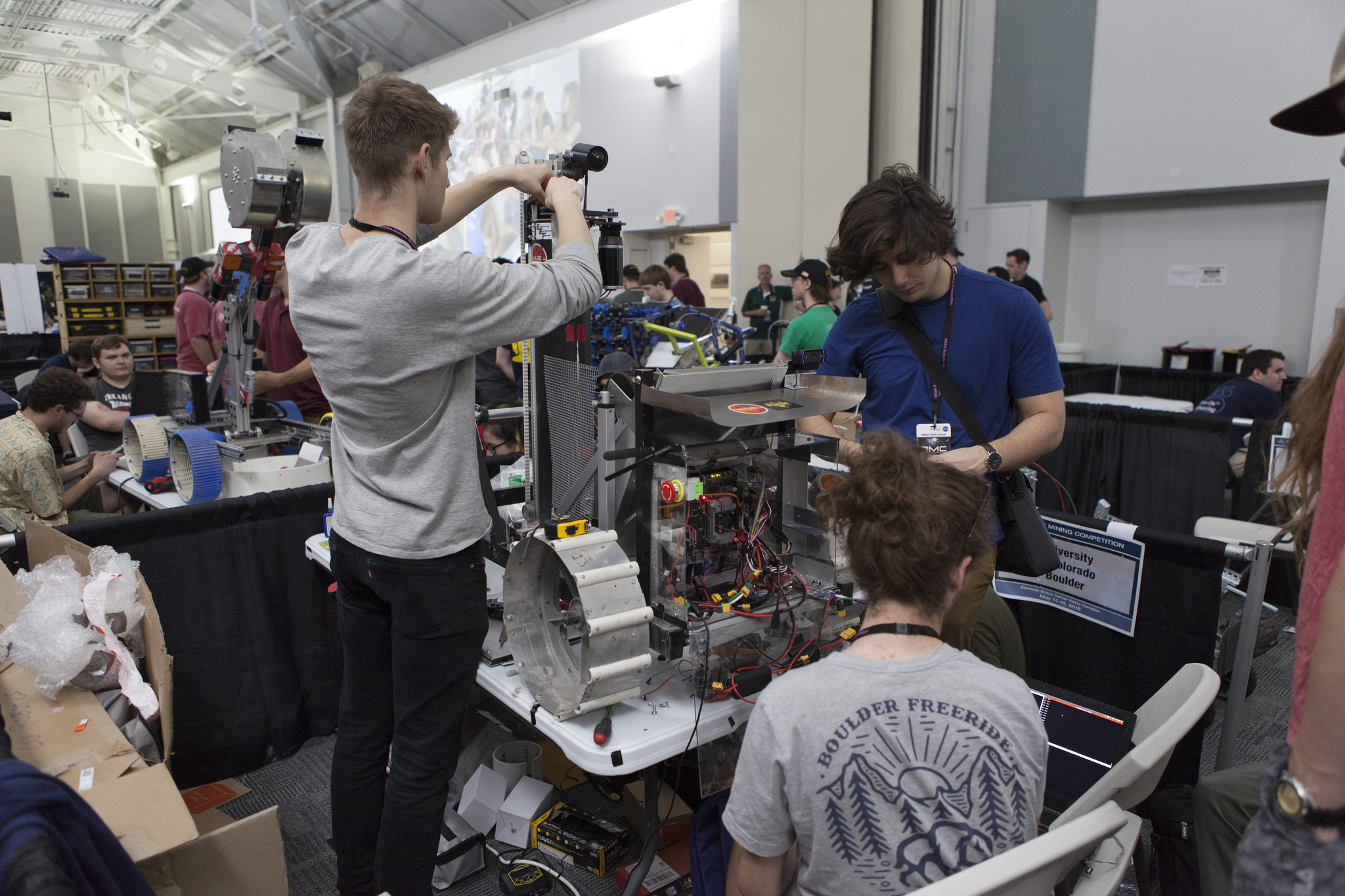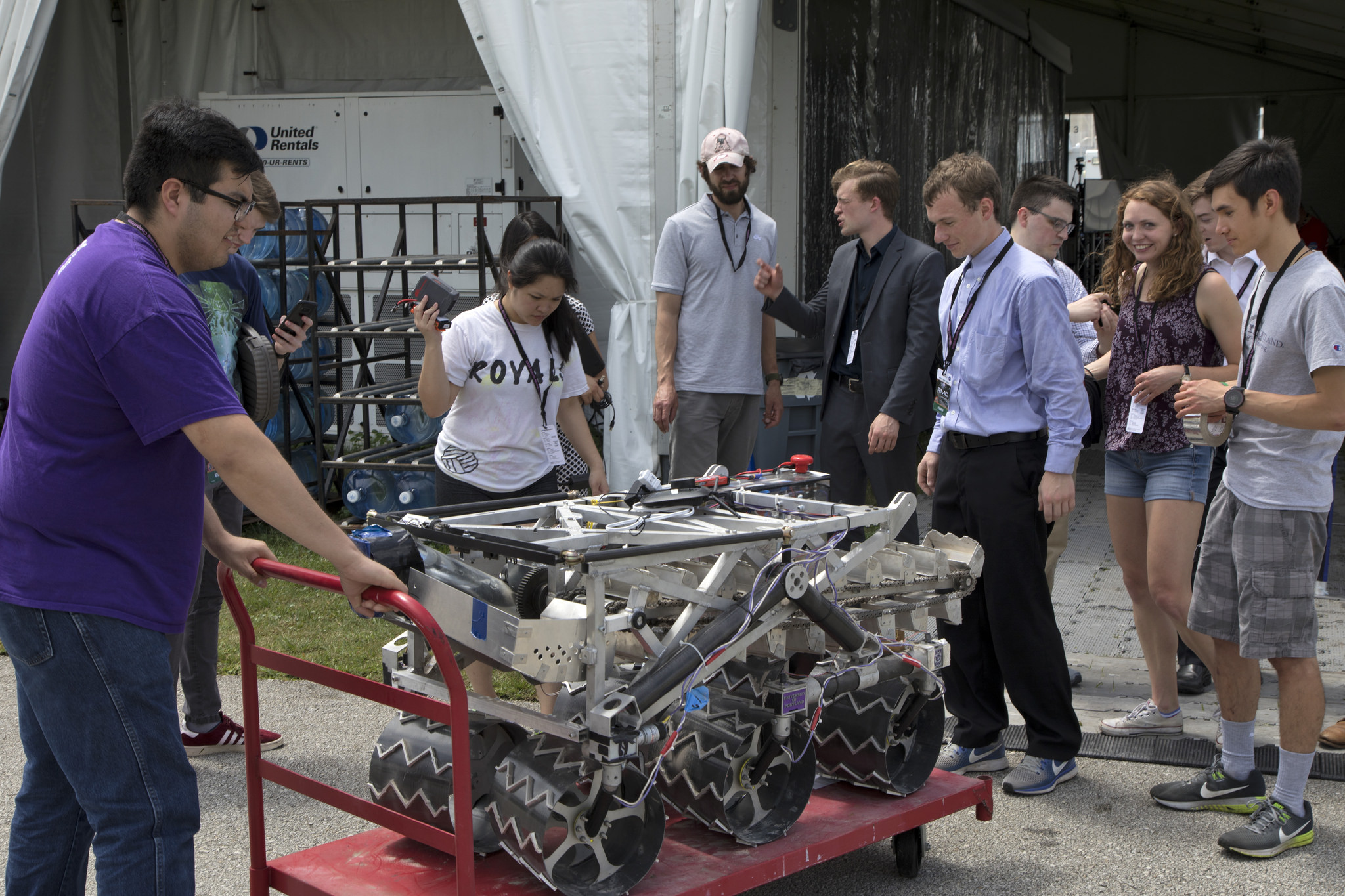More than 40 one-of-a-kind robots mined in simulated regolith, called BP-1, during NASA’s 9th Annual Robotic Mining Competition (RMC), May 14-18, at the agency’s Kennedy Space Center Visitor Complex in Florida. Undergraduate and graduate students from universities around the U.S. spent the last year designing and building their robots and converged at the visitor complex to dig deep in the mining arena.
The teams participated in other competition requirements. They submitted a systems engineering paper, and demonstrated and explained how they designed their robots. Teams also were required to perform science, technology, engineering and mathematics (STEM) outreach in their communities throughout the year and report on their efforts.
Kennedy Director Bob Cabana welcomed the teams during the opening ceremony in the RobotPits inside the Center for Space Education at the visitor complex.
“Robots are the precursor for humans to Mars,” Cabana said. “This is an exciting time for NASA and Kennedy. You are the future. We learn from you sometimes.”
In previous years’ competitions, the robots were required to mine and collect as much of the BP-1 near the surface as possible during two 10-minute runs and deposit the material into a collector. This year’s competition had a new mining requirement—a little twist—to dig and mine for the icy regolith simulant (gravel) buried at least a foot below the surface and deposit it into the collector bin to be weighed.
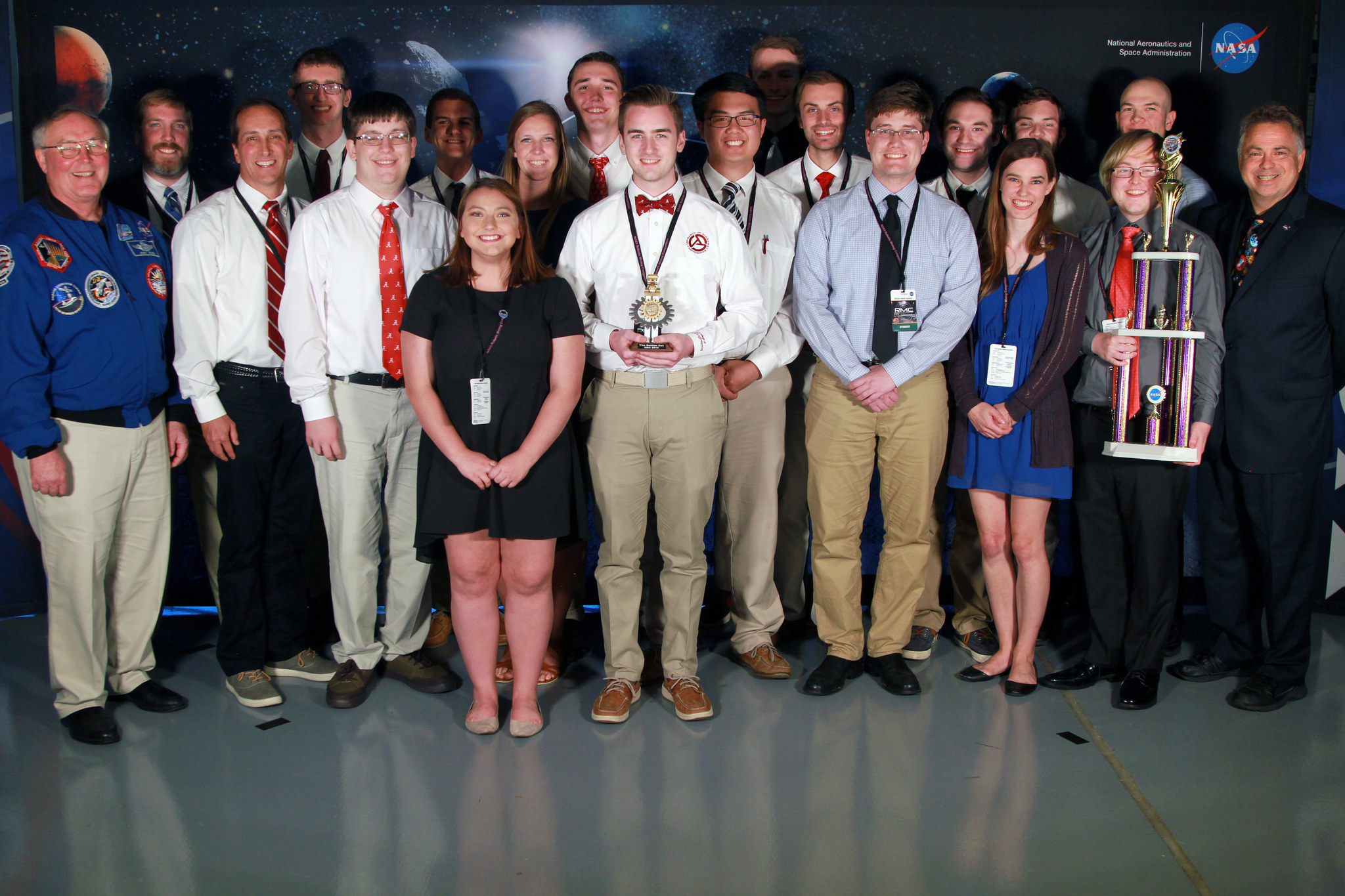
The reason for the mining rule change? If we can mine it here, we can mine it on other worlds, which give us water, hydrogen and oxygen, all components of In-Situ Resource Utilization (ISRU), to start living off the land.
“It was time to dig well below the surface in the arena to simulate what it would be like to search for the icy regolith that may be below the Moon’s surface,” said Rob Mueller, a senior technologist in the Exploration Research and Technology Programs Directorate at Kennedy. “This is their reward for a year’s worth of work.”
Mueller was one of the creators of the Robotic Mining Competition and has served as lead mining judge for all nine years of the annual event.
When the regolith settled and all of the team’s collections were weighed in, the first place award for On-Site Mining went to Team Astrobotics of The University of Alabama during an awards ceremony May 18 at the visitor complex’s Apollo/Saturn V Center. The team also was awarded the top prize, The Joe Kosmo Award for Excellence, which is given to the team that scores the most points overall during the competition. They also received first place in the Caterpillar Award for Autonomy, meaning that their robot mined for the rocks and traversed the arena to deposit it in the collector bin without sending signals from a computer.
“If you consider how long it takes to communicate between planets and where Earth and Mars are in relation to the Sun, autonomy is vital in keeping robots safe and operational to support the mission,” said Rich Johanboeke, NASA project manager.
“It’s a great feeling to know that our team was able to overhaul our entire robot system for this significant rule change and step up to the challenge,” said Maxwell Eastepp, team leader for the University of Alabama. “It feels good to be able to follow in my predecessors footsteps.” Eastepp is a junior majoring in electrical and computer engineering.
Along with many veteran teams returning this year, several new teams joined the roster, including from Saginaw Valley State University in Michigan, the University of Minnesota-Twin Cities, and the University of Maine.
Waqas Qureshi, is a graduating senior and team leader from Saginaw Valley’s Tie Dye Fighters. Their robot, Wall-E, did not qualify in the mining arena, but Qureshi said they learned a lot and will return for next year’s competition.
According to the University of Maine’s Black Bear Robotics team leader, Billy Bessette, they spent about two months designing and building their robot named Crush. They were able to enter this year’s competition thanks to assistance from a Maine Space Grant and kept the robot’s design simple.
Bessette is a junior majoring in mechanical engineering. His sister was on a team from Florida Tech in Melbourne, which is how they learned about the competition. “One lesson we learned, you can never do enough testing,” Bessette said.
Though the University of Minnesota had its challenges they managed to earn an honorable mention with their systems engineering paper, and a new award, the Golden E-Stop Award. Every robot’s design needs to include an emergency stop button, which was shown during their slide presentation and demonstration, and used during a run in the mining area.
Many of the designs incorporated 3D printed parts. For example, The University of Utah’s robot, named Sandcrawler, included 3D-printed flexible wheels and nylon digging elements. In their fourth year at RMC, the team earned the Regolith Mechanics Award for devising a system that vibrated to shake out the dirt, leaving only the mined rocks and gravel to deposit in the collector bin.
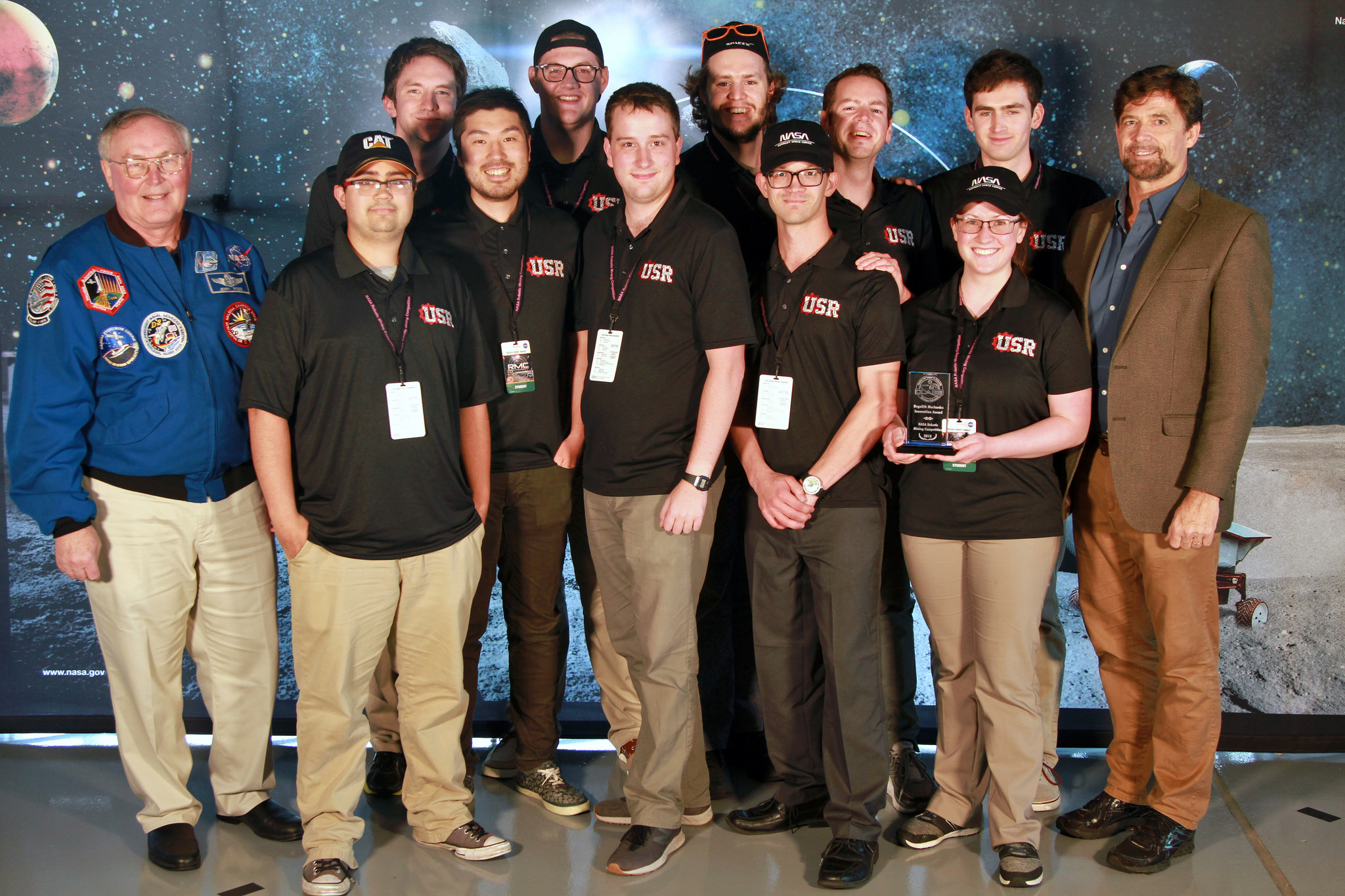
“We used a 3D printed screen with a weave in it to sift the sand out and catch the gravel and rocks,” said Utah team leader Justin Schramm, a graduating senior majoring in mechanical engineering. “Each of the wheels took about 20 hours to 3D print.”
Returning for its ninth year, Iowa State University’s Cyclone Space Mining Club repaired a motor and motor controller on-the-spot just before their robot, Pavonis, was scheduled for its second run in the mining arena. Taylor Meyer, a junior majoring in mechanical engineering, said they took a risk with their design this year.
“Our teamwork culture was very good and everyone remained calm while we worked through the challenges,” she said.
Returning team The Fighting Cardinals from York College – CUNY (City University of New York) worked through the challenge of locomotion or movement through the BP-1 with their robot York Bot 4. Team adviser Daniel Phelps said the school is a minority serving institution (MSI). It was through a NASA MSI grant that they were able to enter the RMC four years ago.
NASA’s Robotic Mining Competition is a university-level competition designed to encourage and retain students in STEM academic and career fields. RMC provides a competitive environment to foster innovative ideas and solutions that could be used on NASA’s deep space missions.
Winners List 2018
Joe Kosmo Award for Excellence
The Joe Kosmo Award for Excellence is given to the team that scores the most points during the competition.
Grand Prize: The University of Alabama
On-Site Mining Award
First Place: The University of Alabama
Second Place: North Dakota University in collaboration with James Madison University
Third Place: Kent State University
Systems Engineering Paper
First Place: The University of Alabama
Second Place: Case Western Reserve University
Third Place: The University of Akron
Honorable Mention Award: University of Minnesota – Twin Cities
Leaps and Bounds Award
University of Colorado Boulder
Outreach Education Project Report
First Place: The University of Alabama
Second Place: Iowa State University
Third Place: The University of Akron
Slide Presentation and Demonstration
First Place: North Dakota State University in collaboration with James Madison University
Second Place: The University of Utah
Third Place (Tie): Case Western Reserve University and The University of Alabama
Golden E-Stop Award: University of Minnesota – Twin Cities
IEEE Judges’ Innovation Award
The team with the most innovative design receives the Judges’ Innovation Award at the discretion of the mining judges.
North Dakota State University in collaboration with James Madison University
Efficient Use of Communications Power Award
The University of Alabama
Regolith Mechanics Award
Awarded to the team with the best example of a real granular innovation that identified a specific regolith mechanics problem and intentionally improved their design to deal with it. Courtesy of the Center for Lunar and Asteroid Surface Science (CLASS), part of NASA’s Solar System Exploration Research Virtual Institute (SSERVI) Network.
The University of Utah
Caterpillar Award for Autonomy
First Place: The University of Alabama
Second Place: North Dakota State University in collaboration with James Madison University
Third Place: The University of North Carolina at Charlotte

